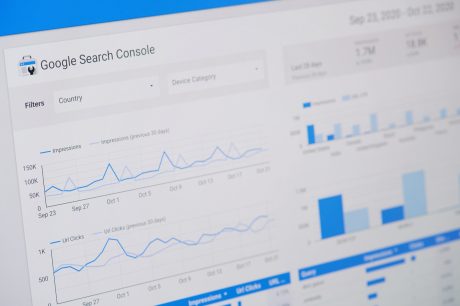How to Write Best Content for SEO?
Learn how to make your content both user-friendly and optimized for search engines. Find out all the best practices that works in 2021 and should be used in articles published on your website.

Table of Contents
- Write content with the proper length
- Implement right (TF IDF) keywords on your content
- Use proper keyword density
- Write super interesting introduction
- Divide your content to subheadlines and paragraps
- Write short sentences and paragraphs
- Use thematic images with proper alts
- Cover all subtopics (recommended searches, H2’s of competitors, people also ask)
- Use proper sentiment
- Add expert quotes and call outs
- Implement bucket brigades
- Use bold when it makes sense for user experience
- Display author box for E-A-T
- Create table of contents
- Use Schema (Article, Question/Answer, Authorship, Same As)
- Add summary
- Ask a question to get comments
- Summary
First of all, the article must correspond to the intentions of people who are searching for it and should describe the topic comprehensively so that the user does not come back to the search results. Remember that CTR and Dwell Time are important for SEO.
But that’s not enough …
What else can you do to make your article appear as high as possible in the search results? We present a full list of what to pay special attention to in 2025.
Write content with the proper length
To find out how long the content of an article should be, you can analyze the top 3 or top 10 organic results, count the words on each page and use this to determine the average article length. It is a time-consuming process that may be an error-prone so it is worth using the Competitors Analysis tool. Just enter the addresses of competitors’ websites from the top 3 or top 10 search results and that’s it. In addition to the recommended content length, you will also get information about the recommended number and types of headlines and much more.
Implement right (TF IDF) keywords on your content
For this purpose, it is best to use the TF IDF tool. Just enter your competitors’ URLs from the top 10. As a result, you will get a list of words worth including in your article. This will make your content more complete.
Use proper keyword density
There is no ideal “keyword density” value to use on every page. It is best to check the competitors from the top 3 or top 10 search results and then determine the average value of “keyword density”. Competitors Analysis can do it for you. Just enter the URL addresses of the competitors’ websites.
Write super interesting introduction
An interesting introduction is intended to encourage the user to stay on the site and read the entire article. However, writing from general to detail, as in traditional printed newspapers, does not really work on the Internet. Internet readers want to receive an answer to their question as soon as possible, so the introduction itself should be substantive and contain as much useful information as possible. Writing an inviting and substantive introduction is quite an art! Note: I recommend that the introduction should not exceed approximately 30 words.
Divide your content to subheadlines and paragraps
Internet users usually do not fully read the content of articles, but scan them with their eyes. If the content of the page is one big paragraph, scanning becomes impossible. Therefore, it is worth dividing pages into subheadings and short paragraphs. After writing the text, it is worth checking it with the Content Editor tool to detect any errors related to the missing subtitles or excessively long paragraphs.
Write short sentences and paragraphs
Users read from the monitor screen approximately 20% slower. Therefore, it makes sense to build short and concise sentences that are easy to assimilate. In Content Editor, we recommend that the sentence should not exceed 20 words, and the paragraphs should not exceed a maximum of 150 words.
Use thematic images with proper alts
Check what images are showing in Google Images for a query related to the topic of your article. In your article, try to use similar photos, but of higher quality and more interesting. After you choose the right photo, it should be natural to describe it with an alt with a keyword. Just a few words. Don’t force the keyword into the alt attribute.
Cover all subtopics (recommended searches, H2’s of competitors, people also ask)
Check what phrases and questions are displayed on Google for a query related to the content of your article. Consider describing these phrases and questions in the body of your article. As a result, your article should be more complete and better respond to the user’s intentions.
Use proper sentiment
Check the sentiments of your competitors’ texts from the top 3 or top 10 search results. Try to use a similar sentence in your article. The tone can be, for example. positive, neutral, or negative. You can quickly get data and recommendations on this in Competitors Analysis. Just enter the URLs of your competitors. The tool uses advanced artificial intelligence algorithms to analyze the content.
Add expert quotes and call outs
Adding expert opinion in an article is a great idea to enrich your content and give it higher authority.
Implement bucket brigades
Use phrases or sentences that encourage further reading of the article to keep the reader curious and engaged in reading the content. These phrases are best placed in separate paragraphs dedicated to this. These phrases are for example:
- What does this mean for you?
- Here’s why …
- The best part is …
- But wait, let me finish.
- But now you should …
- In this situation, you may be wondering …
- Think about it…
- And the good news?
- As if that was not enough…
- On the other hand…
- Now you see…
- In my experience …
- This is true.
Use bold when it makes sense for user experience
Use bold text to help online readers find relevant information in your article. Remember that on the internet, users usually do not read, but scan content.
Display author box for E-A-T
Displaying author information is becoming a standard. It is an easy way to increase the authority of the text and build a personal brand. Also, be sure to include a photo.
Create table of contents
This is especially helpful for longer texts that contain many subtitles. Wikipedia has been doing this successfully for years. This allows direct links to the article sections to appear on Google.
Use Schema (Article, Question/Answer, Authorship, Same As)
Check if your CMS or template supports Schema for Article, Question / Answer, Authorship, and Same As. Thanks to the correct implementation of structured data, search engines will be able to better understand and classify your website. This is a good SEO practice worth implementing.
Add summary
Users often scan the article at the end to read the summary. That is why it is worth putting a short summary of the most important issues from the article at the end of that article.
Ask a question to get comments
The easiest and most effective way to encourage people to interact with your article is to ask a question and ask for answers in comments. This is best done in the last sentence of the article summary.
Summary
The article should be of appropriate length and contain related keywords. Additionally, the article should be broken down into short paragraphs and have an appropriate subheading structure that can be used to create a table of contents.
It would be great if in the article you add an interesting and substantive introduction, expert opinions use bolds for relevant information and the text will have the appropriate sentiment. Do you think you have everything already implemented in the article? Then check your article in the Content Editor now. There will always be something to improve.
Which factor does is most important for SEO in your opinion? Let me know in the comments.



September 21, 2024 at 11:52 am |
The mention of using Schema and structured data is crucial for modern SEO practices.